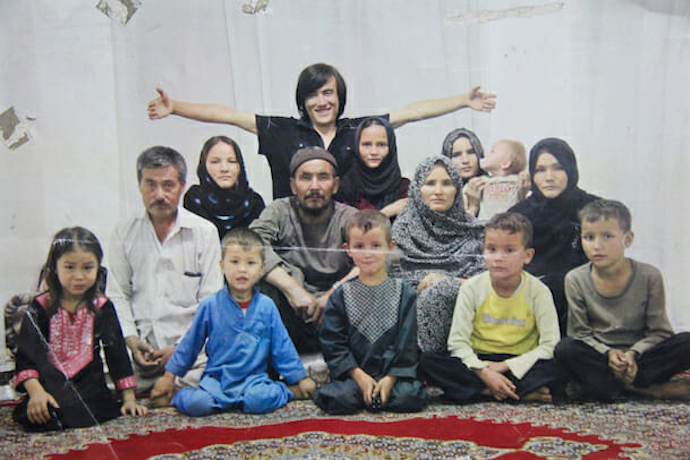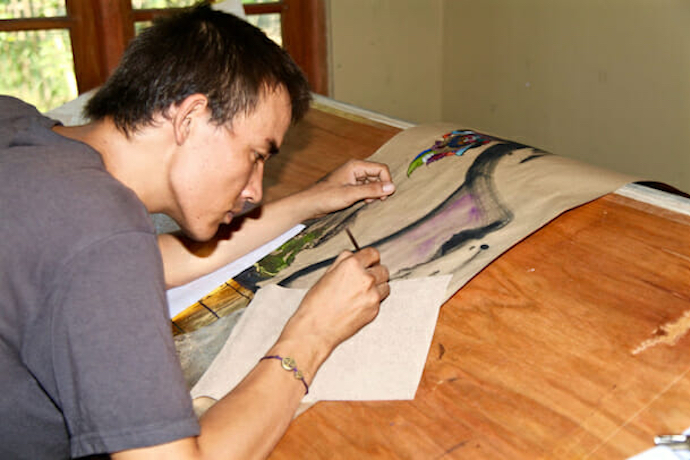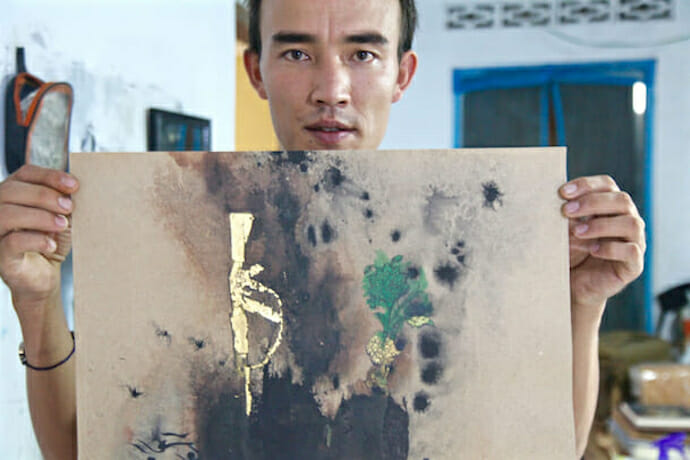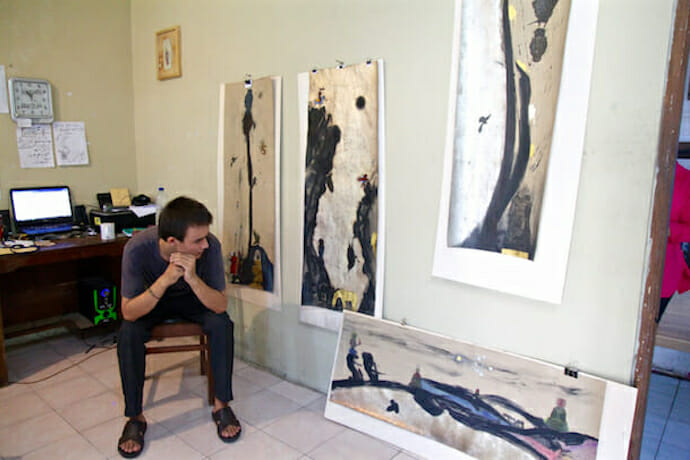
Culture
Indonesian Exhibition Mourns Afghan Buddha Statutes
JOGJAKARTA, Indonesia – In March of 2001, the world watched in horror as the Taliban dynamited the 1,500-year-old giant Buddha statues in Bamiyan Province, the ancestral homeland of Afghanistan’s long-persecuted Hazara minority.
Two months earlier, the Taliban committed an even more heinous crime in their crusade to culturally cleanse Bamiyan – the massacre of around 300 Hazara in the town of Yakaolang. The death toll probably would have been higher if Hayder Taasha, a prominent Hazara livestock trader in Yakaolang, hadn’t left town on a whim with his wife and 11 children only a few days beforehand.
“My father told us to pack our things and said we were moving to Kabul. He didn’t say why,” recalls Hayder’s eldest son Amin, who was five years old at the time. “A few days later, the Taliban came, took hundreds of people away in trucks to the desert, shot them with machine guns and buried them in mass graves.”

The Taasha family may have literally dodged the bullet, but their problems didn’t end after they reached the relative safety of the Afghan capital.
“It’s very hard being Hazara in Kabul,” says Amin. “People see your face and hear your name and straight away they treat you differently. They never let you work, never give you a chance. My father couldn’t find a job, so he sold socks to feed us. My mother weaved carpets and all the children had to help.”
In 2012, Amin – then an undergraduate at the Kabul Fine Arts Institute – experienced Hazara discrimination firsthand after being invited to join the Documenta 13 exhibition at the National Gallery of Afghanistan. He submitted a painting of a demon set not on canvas but on a page of an old Arabic-language textbook he found discarded in the street.
“It wasn’t a religious book, but for some reason the director of the gallery wrote to the Ministry of Information Culture asking for permission to exhibit my work and that of another Hazara artist,” Amin recalls. “When I heard the minister was coming to see for himself, I got a very bad feeling. So I took my art off the wall and hid it. When the minister arrived with his bodyguards, he demanded to see it. I told him not to worry because I didn’t want to exhibit it anymore. But his bodyguards found it, confiscated it and warned me never to do it again.”
“After the minister left, the director of the gallery came to me and the other Hazara artist and said ‘You stupid Hazaras! You’ve embarrassed me!’ Then he called the police to come and arrest us. We were taken to a police station where the policemen pressed their machine guns against our heads and said they would kill us because of what we did. They said they didn’t care if they went to prison for the rest of their lives or even if they got the death penalty because they would go straight to heaven if they killed us.”


Both artists were released a few hours later without charge but were subsequently blacklisted by the national gallery and expelled from school.
And there, Amin’s art career would have ended if not for a phone call he received four months later inviting him to apply for an art scholarship with the Indonesian Government.

“At the time the only language I could speak was Farsi but fluency in English was a very important part for the application,” Amin says. “So I memorised an oral presentation in English where I told them I was a famous international artist. Amazingly, it worked. But when I flew to Indonesia a few weeks later, my English was so poor I couldn’t even buy food during the stopover at Istanbul airport.”
Amin spent his first year in Indonesia in the city of Semarang on the north coast of the island of Java studying English, Indonesian and batik – traditional Indonesian textiles. In 2014, he moved to Jogyakarta, the cultural and creative capital of Java. There he has made a name for himself as an emerging contemporary artist and a cause célèbre of patrons like Italian designer Susanna Perini, Bali-based restaurateur Will Meyrick and Warwick Purser, the Australian-born Honorary Consul General for Mexico in Jogjakarta.
“I met Amin last year at ArtJog, Indonesia’s largest art exposition, and we spent a long time talking,” Purser says. “I was fascinated by his story; it really touched my heart. A few days later he invited me to visit him at his studio. I’ve also taken many of my friends there, all of whom admire his work.”
On Tuesday, Purser opened Iron Cocoon, Amin’s first stand-alone solo exhibition in Jogjakarta. Themed around decapitated Buddhas statues and busts, Iron Cocoon comprise large canvas paintings plus smaller recreations of the controversial painting that nearly cost the artist his life in Kabul.
“Each painting is individual and tells its own story,” Amin says. “The horses are a symbol of mobility – of refugees who want better lives, but then bombs drop from the sky and machine guns shoot at them from the ground. The crows flying over the horses and carrying the Buddha’s head away, they are my interpretation of the clever people who have education and money but use it to destroy their own culture and history. They cleverer they get, the more their power grows out of control.”

